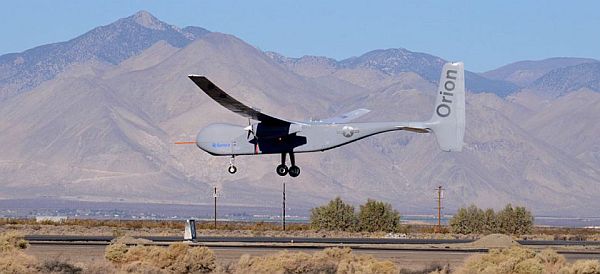Podcast: Play in new window | Download (Duration: 27:23 — 25.1MB)
Using drones for weather prediction, tracking warehouse inventory with an autonomous drone, an FCC NPRM for the UAS communications spectrum, Walmart delivery drone statistics, underwater drones to detect ocean carbon, hardening the electric grid from aerial attacks, and cargo delivery to moving ships.
UAV News
Drones Make Weather Prediction Easier at the Poles
Researchers are using DJI Mavic 2 drones to measure Arctic wind speeds. The only modification required was the addition of an inexpensive, lightweight thermal anemometer. The Japanese National Institute of Polar Research is flying drones from a research vessel.
Video: Using small drones to measure wind speeds in the polar regions
Drones take the night shift for improved inventory tracking
The Vimaan StorTRACK Air autonomous warehouse drone can automate inventory control functions. It scans warehouse racks, delivers accurate inventory status to the warehouse management system, and doesn’t just read barcode labels – it includes optical character recognition and captures the entire contents of warehouse racks.
Video: Cycle Counting Autonomous Warehouse Drones track inventory accuracy and warehouse utilization
U.S. FCC proposes additional spectrum for drone communications
The U.S. Federal Communications Commission (FCC) proposed new spectrum rules for unmanned aircraft systems. This is necessary to accommodate the increasing number of drones, which require wireless communication. The NPRM addresses the 5030-5091 MHz band, which was previously allocated to support terrestrial control links for UAS without adopting service rules. This proposal is the first step to developing those service rules for UAS operations.
Ref: FCC Starts Rulemaking on Licensed Spectrum for Unmanned Aircraft Use
Walmart Drone Delivery by the Numbers
Thirty-six Walmart stores in the U.S. have drone delivery hubs operated by DroneUp, Flytrex, and Zipline. 6,000+ drone deliveries were completed in 2022. The top five customer favorites delivered by drone were cookies, ice cream, lemons, rotisserie chicken, energy drinks, and paper towels. Drone delivery is operating in seven states: VA, NC, FL, AR, TX, UT, AZ.
Meet the scientists and their underwater drones tackling the ‘weirdly complicated’ world of ocean carbon
The underwater drone, or “glider,” nicknamed Migaloo is 1.5 meters long and measures CO2 and pH ocean parameters to understand global carbon sink. The Atlantic Carbon Observatory Pilot Program (ACOP) utilizes moored bottom observatories and gliders that provide mobile pH and CO2 sensors. Real-time data collected is collected via Iridium and Fiberoptic links. The Slocum Underwater Glider is designed and manufactured by Teledyne Webb Research.
We must act now to protect the electric grid from drones
The North American Electric Reliability Corporation is set to review the physical security standards of the electric grid, but that doesn’t address airborne threats. Defensive options need to be investigated, leveraging the progress that National Laboratories and the Department of Defense (DOD) are making in counter-UAS (C-UAS) technologies and systems. Current statutory restraints limit the ability of utilities to defend their facilities from drone attacks.
U.S. Navy Drones Pass Long-Range Test of Unmanned Cargo Delivery to Moving Ships
The Naval Air Warfare Center Aircraft Division (NAWCAD) “recently demonstrated multiple unmanned systems in a first-of-its-kind mission to move supplies to ships at sea.” Two VTOLs were involved in the testing: the Martin V-BAT 128 and the Skyways V2.6 Cargo Aircraft. The Navy is looking for UAVs that have the ability to transport cargo under 50 lbs and fly to and from moving ships.


